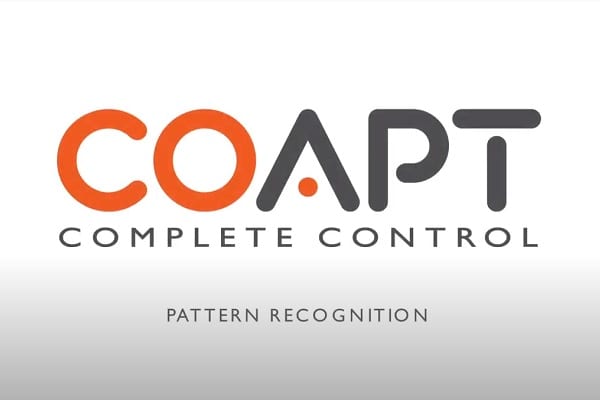Coapt Engineering’s Gen2 is a complete, proven, but expensive myoelectric pattern recognition system. The question is: is it worth it?
A Quick Look at the Coapt Gen2
The following video provides a brief overview of the Gen2 pattern recognition system:
Before reading further, a little background information may be helpful. To obtain this, please see our master article Myoelectric Pattern Recognition for Bionic Arms & Hands, which includes a basic description of how pattern recognition systems work.
As that article indicates, there are a few key areas crucial to the success of any myoelectric pattern recognition system. These are:
- basic technology;
- evaluation support;
- setup & calibration;
- training;
- recalibration by the end-user.
We will examine Gen2 in each of these areas.
Basic Technology
There is a spectrum of pattern recognition technologies:
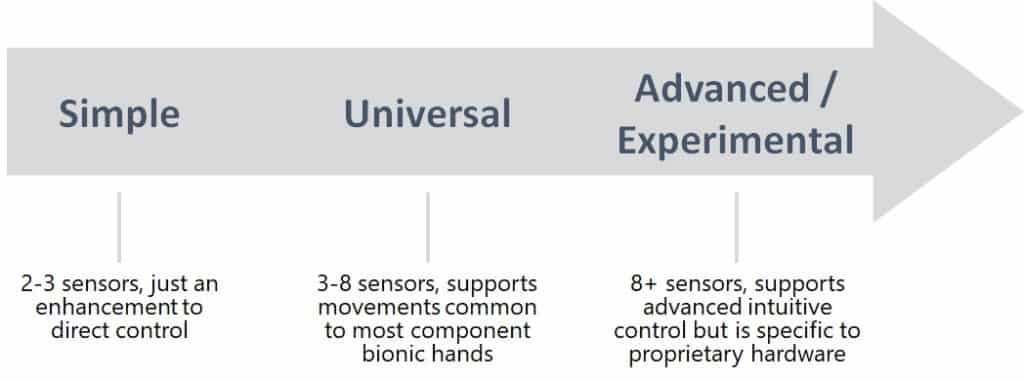
A simple system may use some form of pattern recognition or artificial intelligence to clean up myoelectric signals, but its focus is still on basic bionic hand actions like open and close. We like to think of this mainly as an enhancement to direct control.
Universal systems offer a more complete system of pattern recognition, one that can map patterns of muscle movements to various bionic commands, including the movement of multiple bionic joints at the same time. We call these systems “universal” because they are capable of interfacing with different types of bionic components from different manufacturers.
Coapt’s Gen2 is a universal system. It is meant to be used with eight sensors and can be combined with bionic components from different manufacturers to form an overall solution.
Because Gen2 must support the functionality common to these components, it does not attempt to match the advanced capabilities of some of the more experimental systems on the horizon, such as spontaneous control over individual bionic finger movements.
Instead, Gen2 supports the movements allowed by whatever components it is attempting to control.
How does Gen2 work? Let’s walk you through the typical chronology of its evaluation, configuration, and subsequent use.
Evaluation Support
The first step for a prospective user is to evaluate whether he can benefit from Gen2.
Coapt supports this by supplying the Coapt Evaluation Kit. This kit is loaned but can be purchased if desired. It includes the necessary hardware and computer software for prosthetists and users to operate a virtual arm/hand (sensors, an EMG interface cable, and an evaluation cuff, if necessary, vary by solution and must be purchased separately).
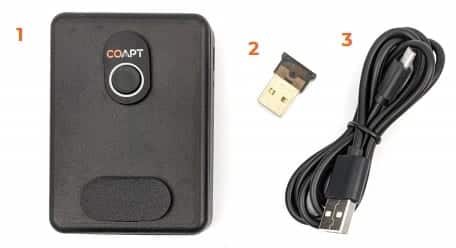
Not only can this kit definitively answer the question of whether a user is a good candidate for Gen2. It can also be used for training purposes before the user takes delivery of a physical bionic arm/hand.
Setup & Calibration
This section assumes that the sensors have been properly placed on the residual limb, that they are connected to the main unit of the evaluation kit, and that the kit is connected to a running instance of Coapt’s Complete ControlRoom Gen2 software.
What is calibration? It is the process of mapping patterns of muscle movements to actions of the bionic arm/hand (whether real or virtual) and works like this:
- The Complete ControlRoom Gen2 software displays a prompt for the user to perform an action with a bionic arm. In this case, the application is asking the user to flex his arm up (i.e. bend the elbow) and hold:
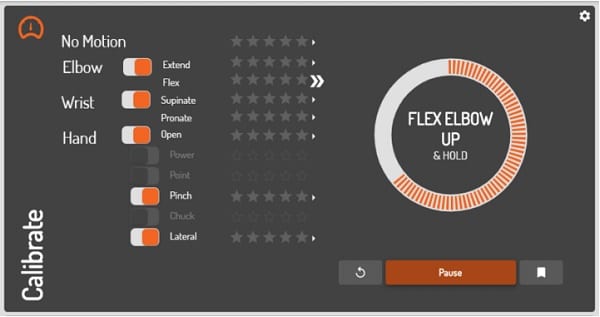
- The user performs the requested action. Note, in a virtual environment, the user attempts to move his phantom arm/hand, which triggers a pattern of muscle movements in the residual limb. The resulting set of myoelectric signals detected by the sensors might appear like this:
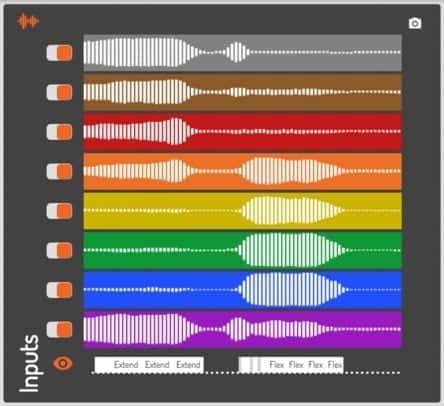
- This pattern of signals is then mapped to the requested action and remembered as such. When the user repeats the pattern (or one similar to it), the Gen2 control system will issue the necessary commands to make the virtual or real bionic device perform the mapped action.
The calibration process is augmented by artificial intelligence algorithms that do the following:
- Rate the quality of your calibrated motions. A 5-star rating means that you’re getting good, reliable control for the action in question. Lower ratings mean that you may need to improve your control. Fortunately, the Control Coach software provides feedback on how to do this.
- The AI algorithms learn over time. The more calibrations you perform, the more the system refines its mapping between your movements and your desired actions.
TRAINING
Control Coach can be used for user training/practice.
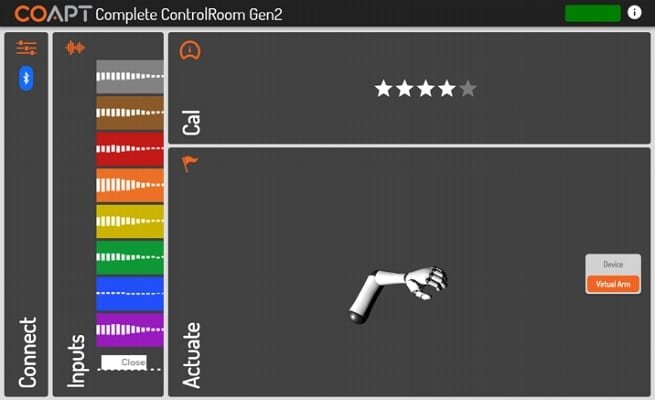
The recommendations that it provides can help end-users improve the quality and consistency of their patterns of muscle movement. This is the end goal of all pattern recognition training processes.
Historically, there was a period when we might have said that the training software for Gen2 seemed slightly inferior to that of IBT’s Sense, but Coapt has beefed up its training system with a growing selection of game-like tasks. They’ve also created a new mobile app called Control Companion…
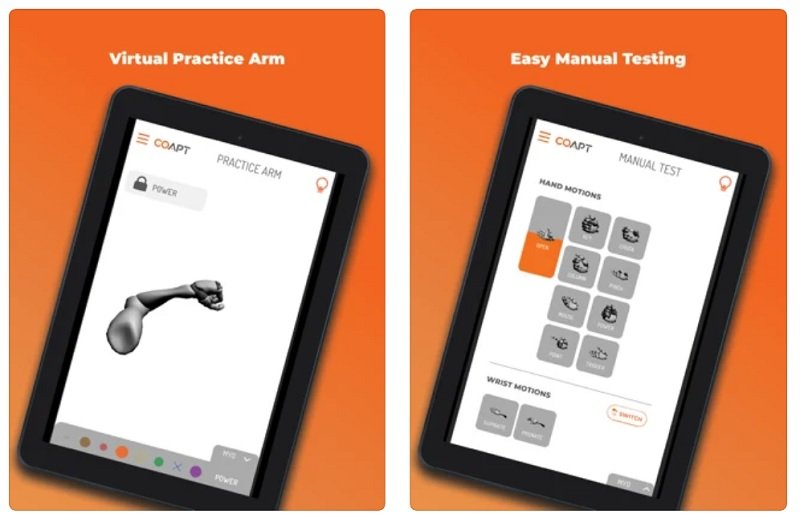
…that now allows users to do a lot more configuration and training on the fly. So, as with most comparisons between Gen2 and IBT’s Sense, the only true conclusion we can draw is that both companies are in an intense arms race (pardon the pun) that benefits all consumers.
RECALIBRATION
One of the challenges of myoelectric control systems, especially those dependent on skin-surface sensors, is that the state of a user’s residual limb is not constant. It can change with things like temperature (swells when hot, shrinks when cold), humidity (skin sweat), and muscle fatigue.
When this happens, users need the ability to quickly recalibrate their pattern recognition system. Coapt takes a unique approach to this issue, allowing users to perform recalibration without the need for a software interface, as demonstrated in this video:
We think this is a really smart way to perform recalibration.
User Feedback Survey & Results
Are you or have you previously been a Coapt Gen2 user? If so, please share your insights with others looking at Gen2 as a possible pattern recognition system.
Survey
Results
We do not yet have a sufficient number of survey participants to publish fair and accurate results for the Coapt Gen2 system.
As soon as we do, we’ll update this section.
Considerations Before Buying Coapt’s Gen2 System
Coapt is clearly a high-quality, professionally run company that is in a healthy cycle of continuous improvement. And Gen 2 is just as clearly a universal pattern recognition system that checks all the boxes. Lastly, with our growing interaction with prosthetists and end-users alike, we have personally witnessed successful solutions that wouldn’t be possible without a pattern recognition system, especially for above-the-elbow amputees.
Having said that, the cost-benefit analysis for a system like Gen2 is becoming increasingly complex. New, more capable bionic hands are entering the market with their own built-in pattern recognition systems. Are you better off seeking one of them or opting for a system like Gen2?
That mostly depends on your budget and your desired functionality. For example, some cutting-edge bionic hands such as the Atom Touch (due out in 2023) are offering capabilities well beyond those of a typical Gen2 solution, including finger-level control and advanced sensory feedback. Atom Touch will cost between $50,000 and $100,000 US depending on its configuration (it can be configured for both below-the-elbow and above-the-elbow solutions). Depending on the components (i.e. the type of hand, wrist, elbow, etc.), a Gen2 solution can easily match or even exceed that price. Then again, we’ve yet to see the Atom Touch hit the market, meaning we don’t yet know if it will deliver on its promises. Given the struggles of others to do the same on advanced functionality like finger-level control, etc. (see the BrainRobotics Prosthetic Hand), that’s a valid concern.
We don’t have an opinion on this cost-benefit issue either way, as our opinions rely solely on our User Satisfaction Surveys, and we don’t yet have enough responses on Gen2 to reach any kind of conclusion.
One thing we do wish that Coapt would do is to release more videos showing Gen2 systems in action, particularly performing daily tasks. Put simply, if you’re going to build a system that claims superior user control as its main benefit, we think you should demonstrate that to prospective users, not just have people standing around talking about it.
Note, however, that this complaint is not limited to Coapt’s videos. It is the #1 complaint that many of our readers voice about videos on upper limb bionics.
Related Information
If you want to read more on the debate over universal pattern recognition systems like Gen2 versus the new proprietary PR systems now emerging, see Which Myoelectric Pattern Recognition System is Right for You?
If you are considering a dual-site, direct-control myoelectric system, do not miss our article on Finding the Right Myoelectric Control System.
For a comprehensive description of all current upper-limb technologies, devices, and research, see A Complete Guide to Bionic Arms & Hands.
Click here for more information on Coapt Engineering.
